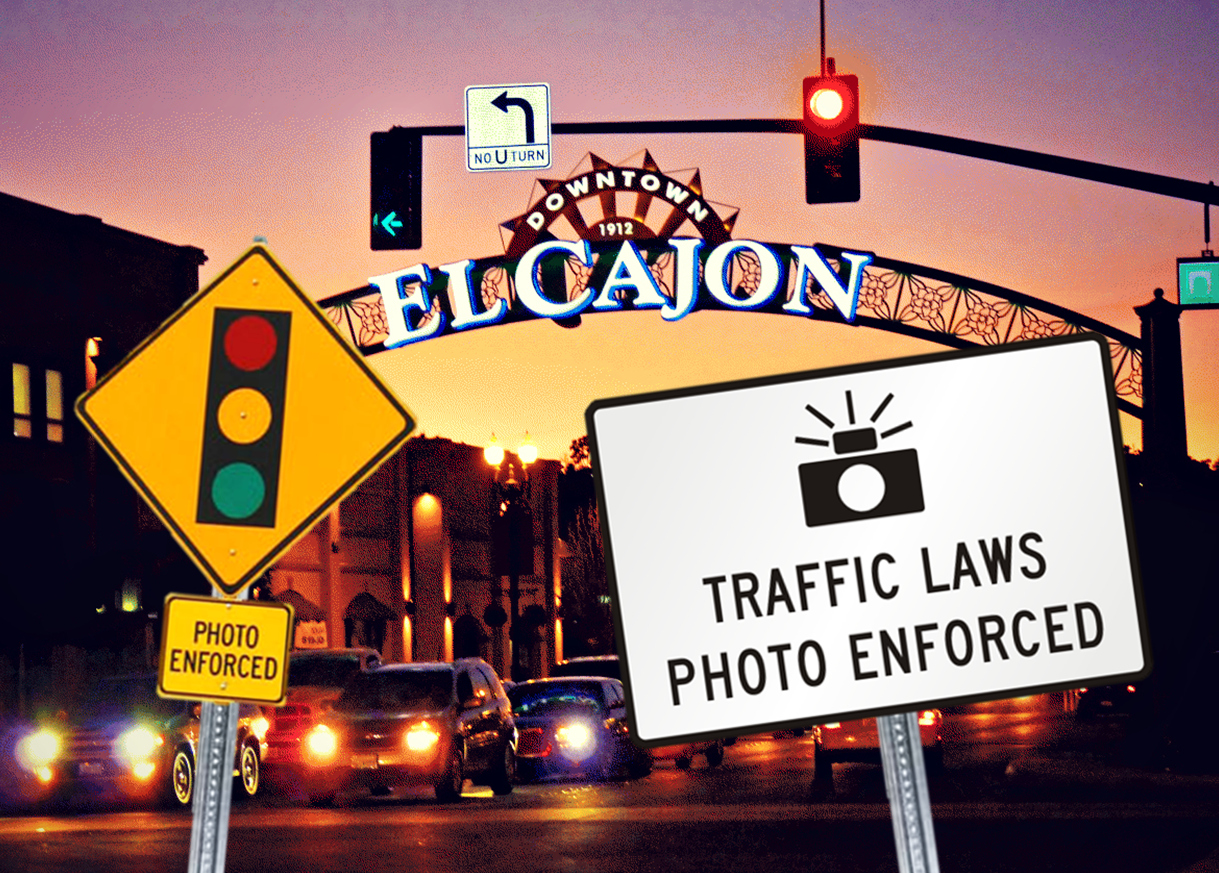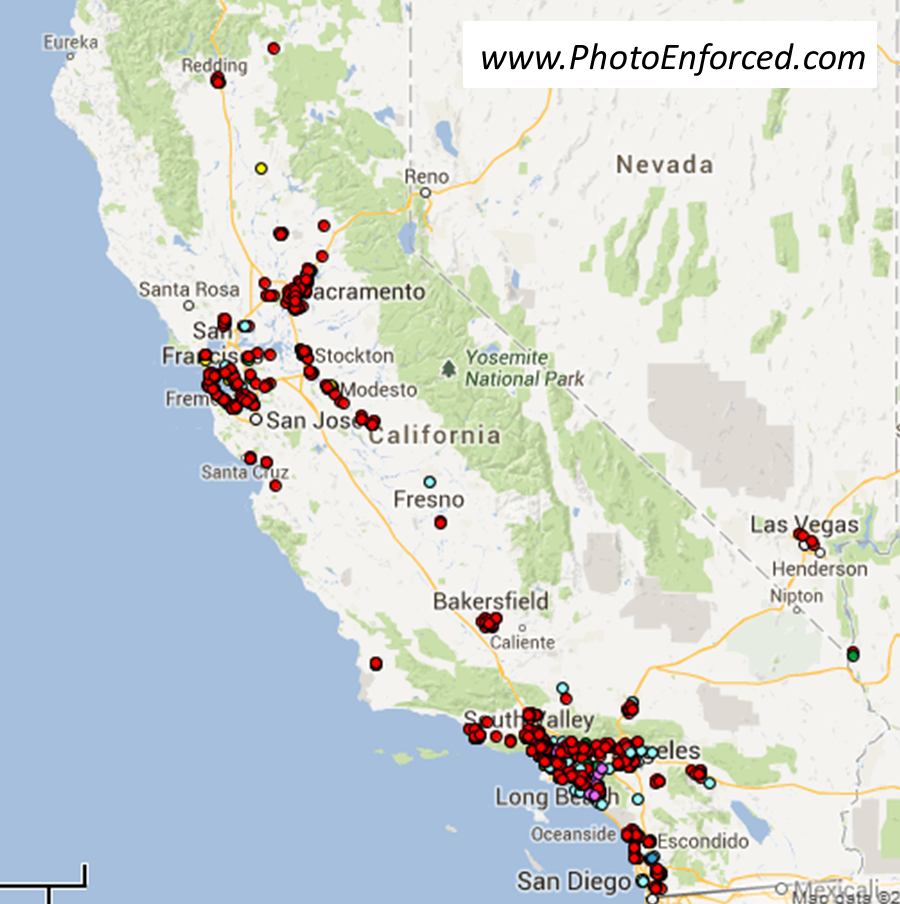El Cajon and South Gate are now among a growing number of public agencies that have decided to kick their red light camera programs to the curb.
In July, columnist Dan Walters reported that over 50 cities in California currently utilize the technology. However, an almost equal number—44 cities across the state—have canceled their respective red light camera initiatives. Los Angeles is the largest city to do so.
At last night’s meeting, the El Cajon City Council approved Item 4.4 of their agenda, effectively ending their relationship with Redflex Traffic Systems, the provider of the cameras.
In theory, the program was supposed to remain fiscally viable for both the city and the company in addition to increasing safety. According to the San Diego Union-Tribune, the initiative failed on both fronts: the safety numbers proved statistically-insignificant and the program in practice ended up costing the city $62,000 annually. Virtually all revenue went to Redflex.
Red light cameras have ignited heated public debate over the past few years.
The cameras are unpopular with motorists and understandably so: if a driver is caught red-handed by the technology, the resulting ticket is costly. The Union-Tribune that the cost of running a red light has skyrocketed over the past two decades, from $103 in 1993 to $490 in 2013.
Frustrated with the system, several motorists have taken legal action alleging a violation of their rights. In 2012, a state appellate court decision on California v. Borzakian ruled that employees from Redflex must be present at court hearings in order to validate the red light photo and admit it as evidence. The ruling substantially raises the legal threshold that must be met, therefore raising the cost of operating the systems.
According to the Union-Tribune, the number of traffic citations that were disputed in court has doubled in the past decade alone, from 196,000 to 383,000 each year.
ABC 7 reported earlier this year that many red light camera tickets are dismissed before they are even seen in court, yet the judicial system still cannot keep up. According to the Union-Tribune, current wait times are over six months in San Diego County and over nine months in LA County.
In an effort to expedite the process, Assemblyman Bob Wieckowski (D-Fremont) introduced AB 666 earlier this year. AB 666 would replace traffic court trials with administrative hearings and make vehicle owners responsible for red light violations committed by others. The bill shifted the burden of proof to citizens and critics claimed significantly hampered due-process. The proposed changes resulted in immediate backlash and Wieckowski pulled the bill from consideration before it was even heard in committee.
The aforementioned challenges have not yet resulted in a complete overhaul of the program. There are still plenty of red light cameras gracing the streets of cities up and down the state.
A user-generated, interactive map of the location of red light cameras in California cities can be found here.






